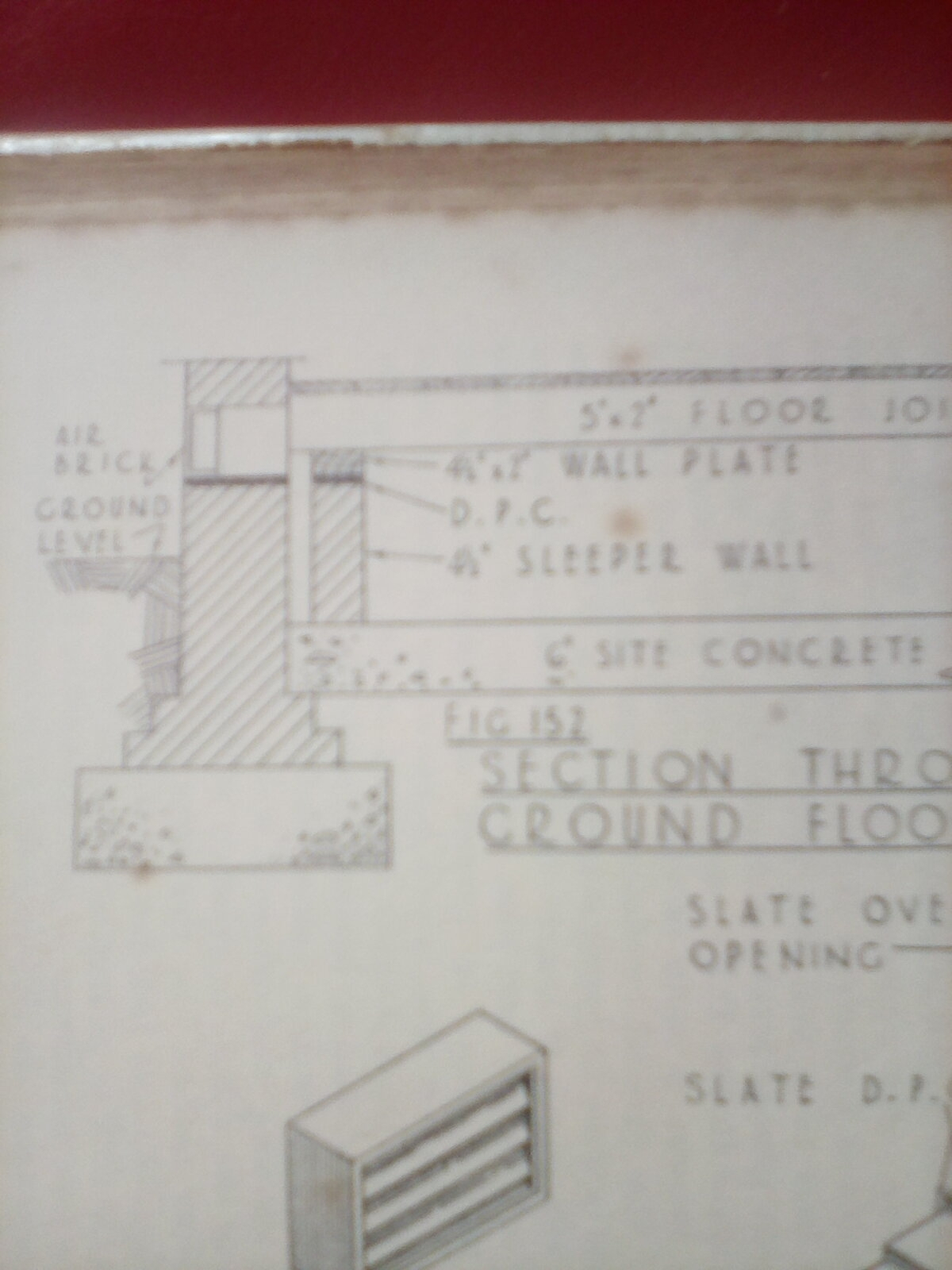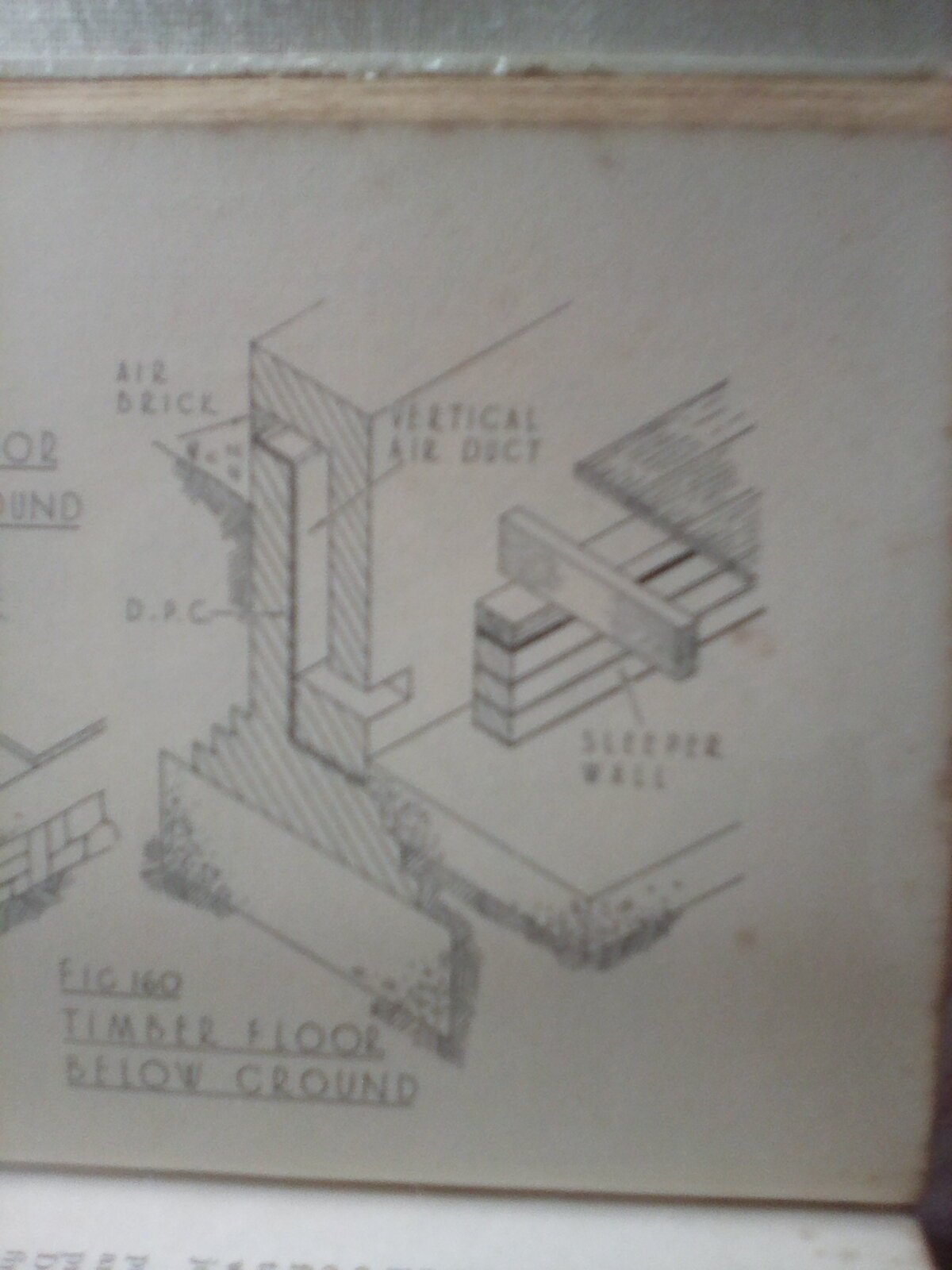We'd like to remind Forumites to please avoid political debate on the Forum... Read More »
We're aware that some users are experiencing technical issues which the team are working to resolve. See the Community Noticeboard for more info. Thank you for your patience.
📨 Have you signed up to the Forum's new Email Digest yet? Get a selection of trending threads sent straight to your inbox daily, weekly or monthly!
Can I do this myself
Options
Comments
-
given the age of the property I'd think it much more certain that the DPC is one brick above the air brick and is the line from which the pebble dashing starts, ie the pebble dash does not bridge the DPC as that would have been the normal construction method at the time, decorative elements above DPC and plain old brick left visible below it.FreeBear said:Sekekama said:
I believe dpc is below it but some parts of DC level with cement but it's been like this 25+ years and so far only cause this minor damp in hallwayFreeBear said:Do you know where the DPC is in relation to the height of the air brick - Ideally, the DPC needs to be 150mm above any hard paving (concrete, tarmac, etc). Cutting away the paving and leaving a 150-200mm wide trench can pay dividends if the paving is too high. It limits rain splashing up off the hard surface and soaking the base of the wall.If the DPC is below the level of the air brick, then you have a serious problem - The concrete will be bridging the DPC and rain water will soak the base of the wall leading to penetrating damp internally. Just because it has been like this for 25+ years, it doesn't mean that damage is not being done in areas that you can not see.
the problem appears to be someone has built up the surface around the house too high, necessitating the "bund" around the air brick to allow them to function correctly. As others suggest, excavating large spaces around the airbrick is the solution.0 -
Bookworm105 said:
given the age of the property I'd think it much more certain that the DPC is one brick above the air brick and is the line from which the pebble dashing starts, ie the pebble dash does not bridge the DPC as that would have been the normal construction method at the time, decorative elements above DPC and plain old brick left visible below it.FreeBear said:Sekekama said:
I believe dpc is below it but some parts of DC level with cement but it's been like this 25+ years and so far only cause this minor damp in hallwayFreeBear said:Do you know where the DPC is in relation to the height of the air brick - Ideally, the DPC needs to be 150mm above any hard paving (concrete, tarmac, etc). Cutting away the paving and leaving a 150-200mm wide trench can pay dividends if the paving is too high. It limits rain splashing up off the hard surface and soaking the base of the wall.If the DPC is below the level of the air brick, then you have a serious problem - The concrete will be bridging the DPC and rain water will soak the base of the wall leading to penetrating damp internally. Just because it has been like this for 25+ years, it doesn't mean that damage is not being done in areas that you can not see.Similar age property here. The DPC in mine is below the air brick. But that can not be used as a guide for other buildings across the country. Building standards & methods suffered from regional variations prewar, and even now, there are still local quirks.If the OP can lift one or two floorboards without too much damage, it would be fairly easy to identify where the DPC is.
Her courage will change the world.
Treasure the moments that you have. Savour them for as long as you can for they will never come back again.0 -
They're often below the air brick in older properties, but as you say methods varied a lot before the 60's. Here's a couple of diagrams from an old book from Tech.


0 -
Nutz. That last image shows the DPC for the inner leaf to be at a lower level than the outer. Mucks up my advice to look for the DPC internally....stuart45 said:They're often below the air brick in older properties, but as you say methods varied a lot before the 60's. Here's a couple of diagrams from an old book from Tech.
Her courage will change the world.
Treasure the moments that you have. Savour them for as long as you can for they will never come back again.0 -
There's always one house somewhere in the country to catch you out.0
-
I had 3 floorboards open the air brick being blocked caused the issue lots of soil and twigs joists are mostly fine abit spongy might just add a wood below it to support or add ronseal wet rot hardner. Situation should be fine dehumidifier is working now and this house not had any work done in 50 years so this maintenance should last.FreeBear said:
Nutz. That last image shows the DPC for the inner leaf to be at a lower level than the outer. Mucks up my advice to look for the DPC internally....stuart45 said:They're often below the air brick in older properties, but as you say methods varied a lot before the 60's. Here's a couple of diagrams from an old book from Tech. 0
0 -
They are open how do I find it I have a feeling it is below air brick based on some lines I've seenFreeBear said:Bookworm105 said:
given the age of the property I'd think it much more certain that the DPC is one brick above the air brick and is the line from which the pebble dashing starts, ie the pebble dash does not bridge the DPC as that would have been the normal construction method at the time, decorative elements above DPC and plain old brick left visible below it.FreeBear said:Sekekama said:
I believe dpc is below it but some parts of DC level with cement but it's been like this 25+ years and so far only cause this minor damp in hallwayFreeBear said:Do you know where the DPC is in relation to the height of the air brick - Ideally, the DPC needs to be 150mm above any hard paving (concrete, tarmac, etc). Cutting away the paving and leaving a 150-200mm wide trench can pay dividends if the paving is too high. It limits rain splashing up off the hard surface and soaking the base of the wall.If the DPC is below the level of the air brick, then you have a serious problem - The concrete will be bridging the DPC and rain water will soak the base of the wall leading to penetrating damp internally. Just because it has been like this for 25+ years, it doesn't mean that damage is not being done in areas that you can not see.Similar age property here. The DPC in mine is below the air brick. But that can not be used as a guide for other buildings across the country. Building standards & methods suffered from regional variations prewar, and even now, there are still local quirks.If the OP can lift one or two floorboards without too much damage, it would be fairly easy to identify where the DPC is.0 -
Gently scrape some of the mortar out (no more than ~3mm). You should see some black material in the joint. This may be some bitumastic liquid that had been poured in when the house was built, or you may find a thicker layer of what looks like roofing felt. If the DPC is slate, it will be rock hard and instantly recognisable.Sekekama said:
They are open how do I find it I have a feeling it is below air brick based on some lines I've seenFreeBear said:Bookworm105 said:
given the age of the property I'd think it much more certain that the DPC is one brick above the air brick and is the line from which the pebble dashing starts, ie the pebble dash does not bridge the DPC as that would have been the normal construction method at the time, decorative elements above DPC and plain old brick left visible below it.FreeBear said:Sekekama said:
I believe dpc is below it but some parts of DC level with cement but it's been like this 25+ years and so far only cause this minor damp in hallwayFreeBear said:Do you know where the DPC is in relation to the height of the air brick - Ideally, the DPC needs to be 150mm above any hard paving (concrete, tarmac, etc). Cutting away the paving and leaving a 150-200mm wide trench can pay dividends if the paving is too high. It limits rain splashing up off the hard surface and soaking the base of the wall.If the DPC is below the level of the air brick, then you have a serious problem - The concrete will be bridging the DPC and rain water will soak the base of the wall leading to penetrating damp internally. Just because it has been like this for 25+ years, it doesn't mean that damage is not being done in areas that you can not see.Similar age property here. The DPC in mine is below the air brick. But that can not be used as a guide for other buildings across the country. Building standards & methods suffered from regional variations prewar, and even now, there are still local quirks.If the OP can lift one or two floorboards without too much damage, it would be fairly easy to identify where the DPC is.
Her courage will change the world.
Treasure the moments that you have. Savour them for as long as you can for they will never come back again.0
Confirm your email address to Create Threads and Reply

Categories
- All Categories
- 350.9K Banking & Borrowing
- 253.1K Reduce Debt & Boost Income
- 453.5K Spending & Discounts
- 243.9K Work, Benefits & Business
- 598.8K Mortgages, Homes & Bills
- 176.9K Life & Family
- 257.2K Travel & Transport
- 1.5M Hobbies & Leisure
- 16.1K Discuss & Feedback
- 37.6K Read-Only Boards



